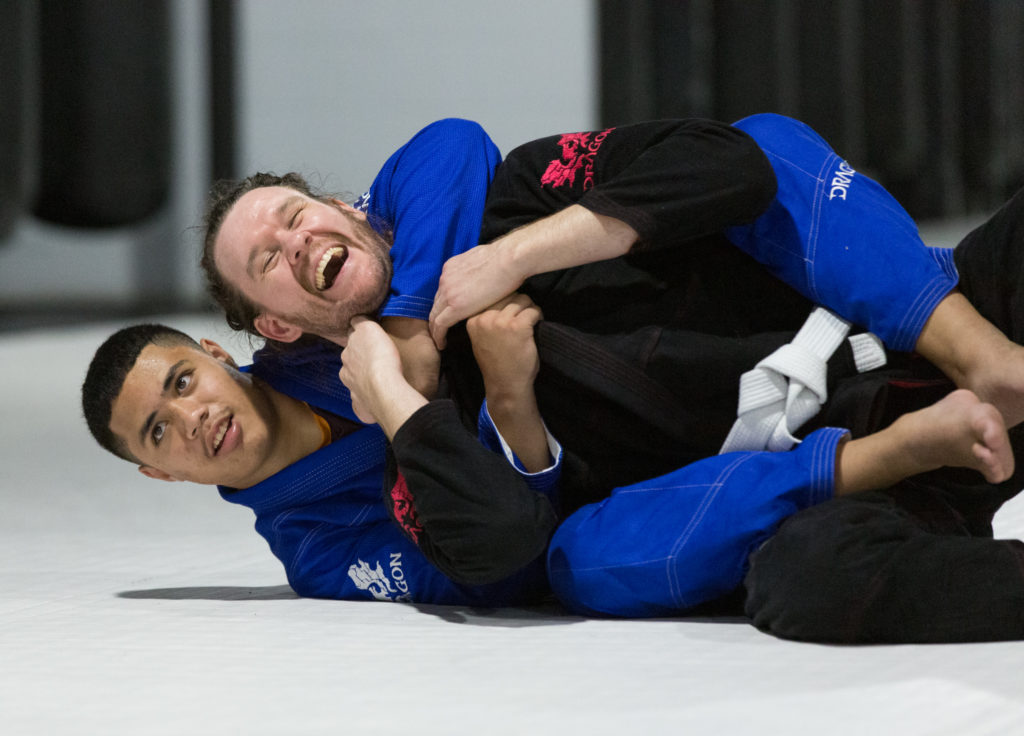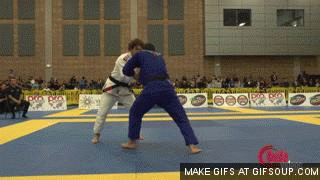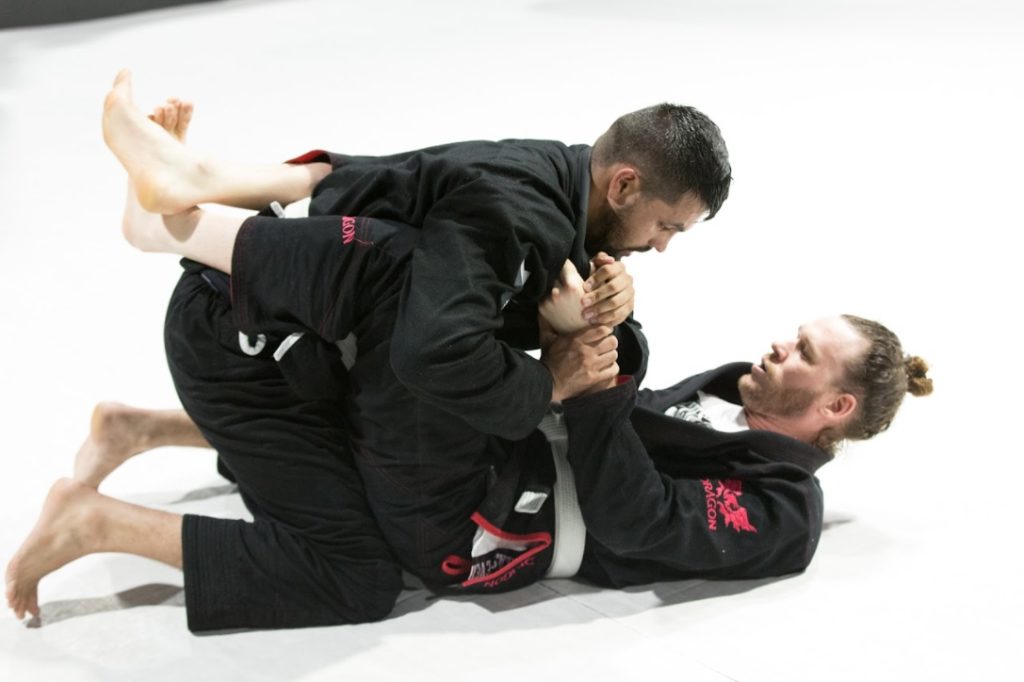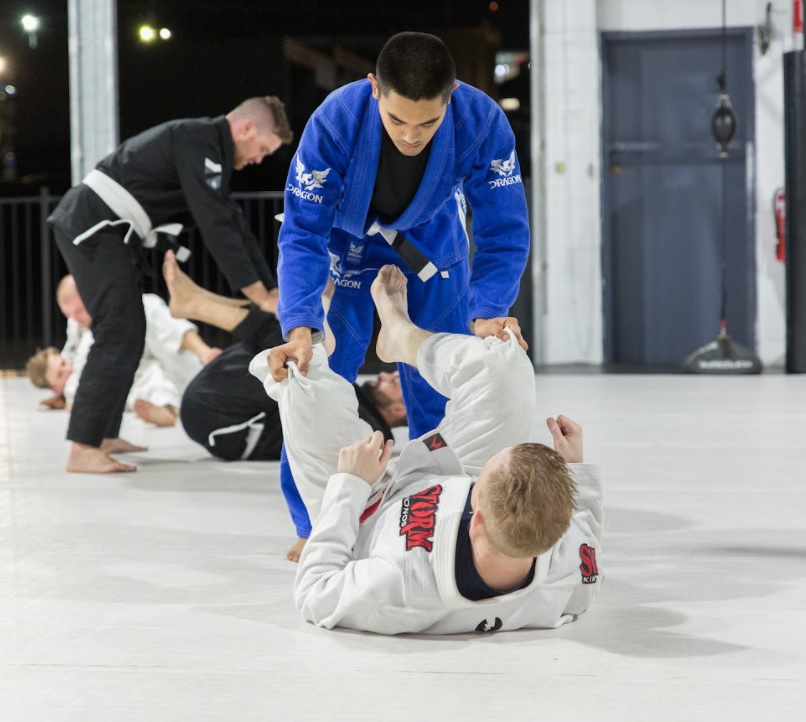Upcoming Events
No event available, please check back again, thank you.
Latest Articles
5 BJJ Techniques to Submit Your Opponent From the Guard in 2022
3 November 2021
Brazilian Jiu Jitsu is a grappling-based martial art. It focuses on neutralizing the opponent through skill rather than force, making it the ideal martial art for law enforcement. In BJJ, size and brute force alone won’t get you far in your journey. A small person can take a bigger, stronger opponent down with a variety of BJJ techniques. In fact, even BJJ techniques for beginners can take you far in terms of self-defense, especially against opponents with no martial arts training.
That’s why BJJ is a popular self-defence martial art and one of the fastest-growing sports. It is steadily gaining traction in both the competitive and recreational crowds alike.
Our local BJJ community at The Fight Centre features a diverse bunch of people. Some train to compete, others train for fun. With its intense calorie-burning capabilities, it’s also a popular fitness option. The BJJ community has been growing quite well across the globe. It wouldn’t even surprise us if we saw it in the 2024 Olympics!
(If you’re still on the fence about whether to enrol in BJJ or not, this is the sign that you should. Go sign up for a class at your local BJJ gym. Or, if you’re in the area, you can drop in for a free trial class with us to see what it’s like to train with world-class coaches.)
When you join a BJJ class, one of the first things you’ll learn are BJJ fundamentals, such as the basic positions. Some examples are the guard, side control and full mount, to name a few. It’s important that you focus on getting the basics down pat – after all, you execute some of the best jiu-jitsu moves from these positions.
In this article, we’ll talk about the guard, as well as the different BJJ techniques for beginners that will take you far on your journey.
-
The BJJ Guard
What is guard in jiu jitsu? The BJJ guard is likely the first position you’ll learn in a BJJ fundamentals class. It is a position where a player has their back to the ground and attempts to control the opponent using their legs. In a pure grappling scenario (not MMA, that is), it is an offensive position with many opportunities.
What are the different types of BJJ guard?
If we had to name one thing that sets BJJ apart from other grappling systems, it would be the depth of the BJJ guard positions. There is a massive arsenal of sweeps and submissions you can use in the guard. You can’t understate the importance of a good guard game to a productive BJJ career.Here are a few of the most common BJJ guard positions for you to get to know: -
1 Pulling Guard
Pulling guard has become a common practice in the advent of point-based tournaments. It’s not an illegal move, though other practitioners do happen to frown upon this practice generally. But what is pulling guard, and what makes it impractical?
BJJ fights happen on the ground, but for it to be useful in a fight, you must be able to take your opponent to the ground. Usually, this means using takedowns or sweeps, which you can do regardless of what the target is wearing. Pulling guard is more doable when wearing the Gi, taking realism out of the game.
It doesn’t really count as a BJJ guard type. Instead, it’s when players transition directly from standing to the guard position. It is the act of pulling the opponent down into the guard without bothering with sweeps and takedowns. The thing about pulling guard is that it works when you and your opponent wear a Gi, but not so much in a no-Gi setting.
-
2 Closed Guard or Full Guard
What is the closed guard? BJJ players also call it the full guard. The BJJ closed guard is the most recognizable guard position in the game. A player, with their back to the ground, hooks both their legs behind the opponent’s back. They have to keep the opponent from standing or moving away as they execute BJJ techniques to submit. At the same time, their opponent tries to open the legs for opportunities to pass (or escape) the guard.
There are a lot of BJJ submissions from closed guard, some of which are the armbar, Kimura lock, and guillotine choke.
-
3 Open Guard
The open guard is when the legs aren’t tightly locked behind the opponent’s back. Instead, the foot (or both feet) push against the opponent’s hips. You can use the open guard to move the opponent’s body or create some leverage. The nature of the open guard makes it susceptible to passing. It is usually a temporary position to set up sweeps and other BJJ techniques.
-
4 Half Guard
In the past, players saw the BJJ half guard as the halfway point between the full guard and getting passed. Today, though, it has become a bottom position offering offensive BJJ techniques. The bottom player angles a bit towards the side and controls one of the opponent’s legs using their own. BJJ half guard submissions include the traditional Kimura, the triangle choke, and the cross choke.
-
BJJ Techniques to Submit Your Opponent From Guard
Now that you’re all familiar with the different BJJ guard techniques for beginners, let’s move on to the different BJJ guard submissions. Here are five of the absolutely must-know BJJ submissions from the guard you must have in your arsenal.
-
1 Kimura
If you had to choose only one BJJ submission, the Kimura lock might be your best bet. The Kimura arm lock is one of the most beautifully diverse BJJ techniques. You execute a Kimura submission from virtually any position in BJJ. If you can grab your opponent’s arm and twist it behind their back, you’re good to go.
The Kimura arm lock uses the fairly simple mechanism of leverage. Twisting your opponent’s arm behind their back puts pressure on their shoulder and elbow joints. This lends the Kimura the alternate name shoulder lock.
Watch this video to see a practical demonstration of how to do Kimura:
-
2 Armbar
The armbar lock is one of the BJJ techniques for beginners, so you’ll learn it early on in your journey. It is also a go-to move for many players across the globe, and tournaments rarely ever go without a few armbar submissions finishing matches.
Armbars use the principle of leverage, with the arm as the lever and the elbow as the pivot point. Like the Kimura, it belongs to a family of submissions called the armlock. The classic armbar technique has three points:
- The attacker grips the target’s wrist
- They lock the target’s upper arm and shoulder in place with their legs, and
- They push with their hips in a glute bridge to put pressure on the elbow.
As a result, the pressure hyperextends the elbow and pushes the target to tap out.
Let’s say the target doesn’t tap out. What happens then?
A familiar BJJ horror story is breaking an arm with the armbar. How likely is it, though? If you don’t tap out when you hyperextend your elbow, you’d be likely to tear ligaments and tendons. You can even dislocate your elbow. As far as breaking an arm… it’s not impossible, but it is pretty hard to do unintentionally.
Watch the following video to see how to do an armbar from guard:
-
3 Reverse Armbar
The reverse armbar (also called the razor lock, the cutting armbar, or the arm crush) is one of the trickier BJJ techniques for beginners. It has a lot of nuances, and there are a lot of things you need to get right to make sure it works.
You’ll learn the reverse armbar as a white belt, but it won’t be until later that you’ll really get how it works. Once you get it right, though, the payback is immense. Aside from being a powerful submission, it is also a useful tool to set up sweeps when you’re at the bottom.
-
4 Wrist Lock
There are some BJJ techniques that players absolutely hate to be hit with. At the top of this list is the dreaded wrist lock, BJJ’s most underestimated and underutilized submission. You can get hit by a wrist lock from virtually anywhere, and when you do, you’re definitely going to feel it.
The wrist has one of the greatest ranges of motion of the joints in the human body. It can move every which way, and it can help you push, pull, grab, and turn things. It is made up of many small bones that are easy to injure. There are also many directions it can go to force a submission.
Wrist locks are super-efficient, and once it’s locked, you’ve only got a few moments before they seriously hurt your wrist. Better not delay that tap out!
(To avoid injuring their mates, white belts are usually discouraged from using wrist locks. This is because white belts, compared to their more experienced counterparts, tend to focus on force rather than technique. Read more about the BJJ belt system here.)
Here are five variations of the wrist lock from guard that you can use to terrorize your local gym:
-
5 Guillotine
The front naked choke is otherwise known as the guillotine choke. BJJ players can apply as air or a blood choke, depending on the user’s technique. An effective guillotine can either cut off your opponent’s air supply or blood supply to the brain.
Blood chokes are more effective in BJJ. These can render your opponent unconscious in a matter of seconds.
There are several different grips and angles you can use for the guillotine choke. You don’t even have to be in the guard to do it. You can execute a guillotine choke standing up.
The most important point is that you’ve got an arm over your opponent’s head, wrapped underneath their chin. Make sure to keep your elbows in, pressure down on their head, and drop your shoulder on their neck as you press upon it with your arm.
Basically, the guillotine choke can kind of look like you’re trying to tuck their head in your armpit.
But rather than hurt your head trying to imagine it, let’s make your life easier and watch this instead:
-
Final Thoughts
As Bruce Lee once said…
“I fear not the man who has practiced 10,000 kicks once, but I fear the man who has practiced one kick 10,000 times.”
Master the BJJ techniques for beginners and take the time to understand how each of them works. With a good understanding of the principles behind the techniques, you use them to your advantage in any situation. Remember, even the basic moves, with mastery, can be your greatest weapons on the mats.
There are a lot of fancy moves in BJJ, and honestly, there’s a small part in all of us that wants to show off our skill on the mats. Let’s keep in mind, though, that the one who wins isn’t the one with the fanciest moves. Instead, it’s the one who effectively uses their BJJ techniques to submit their opponent.
If you liked this article, check out…
What Is the BJJ Belt System and How Does It Work?




